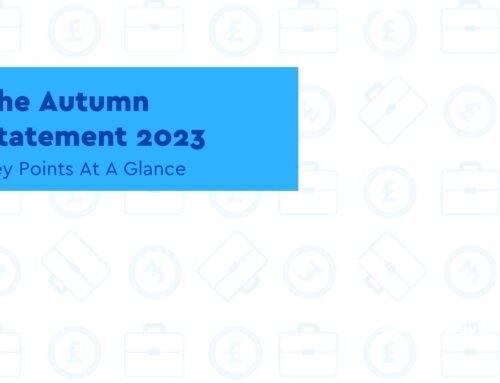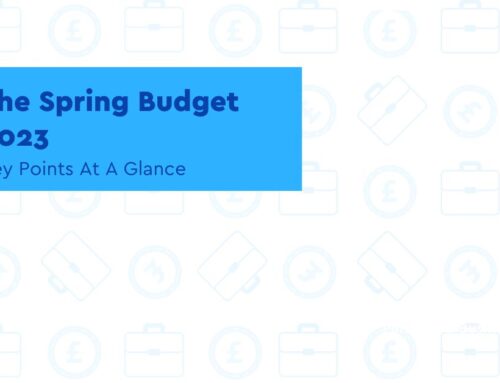News – Employers
New minimum wage: How should your business prepare?
The new minimum wage will be introduced from 1 April. How can employers prepare for the increased cost?
Key Points
- When it is introduced in April, the new National Living Wage for over-23s will be £9.50 an hour
- On average, the rise means a full-time worker will now be paid £1,074 extra a year (pre-tax)
Workers on the minimum wage will get a pay rise on 1 April 2022, as the rate for those aged over 23 increases to £9.50 an hour. For employees, this may feel a modest step up from the previous rate of £8.91 per hour, but it has big implications for businesses paying their staff.
With inflation rising to 5.1% in the UK – its highest in a decade – the government has faced pressure to help low-paid, younger workers, who are among the worst hit by the pandemic amid a steadily rising cost of living.
Small businesses are already shelling out for the added costs of fuel, energy and supplies, so for many employers, the minimum wage rise couldn’t have come at a more challenging juncture.
As the 1 April approaches, we look at how the new minimum wage will affect small business costs, plus savvy ways to minimise the impact.
What is the new minimum wage?
When it is introduced in April, the new National Living Wage for over-23s (otherwise known as the minimum wage) will be £9.50 an hour. This is a 6.6% increase on the previous rate.
Minimum pay rates for younger workers are also set to go up.
- National Living Wage for over-23s: From £8.91 to £9.50 an hour
- National Minimum Wage for those aged 21-22: From £8.36 to £9.18
- National Minimum Wage for 18 to 20-year-olds: From £6.56 to £6.83
- National Minimum Wage for under-18s: From £4.62 to £4.81
- The Apprentice Rate: From £4.30 to £4.81
It does not matter how small you are as an employer, you will still have to pay the correct minimum wage.
Business leaders must keep records to prove they are paying at least the minimum wage to their staff. In a dispute at a tribunal or civil court, the burden is on the employer to prove that the minimum has been paid.
How will this affect small businesses?
According to card payment provider Take Payments’ 2021 business trends report, one in four (28%) of SME respondents said they think the government should offer them extra support to help cover the minimum wage increase.
That’s because, for many UK startups and small businesses, the new minimum wage represents yet another restriction on growth in a two-year period that’s been plagued by the coronavirus outbreak, Brexit, and a whole host of supply chain issues including rising petrol costs and impact of customer cancellations.
Earlier this week, we reported that inflation is now the top concern for UK SMEs – who are not protected by Ofgem’s domestic consumer price cap. 46% of respondents in an Iwoca survey said increased running costs are a main concern for their business in 2022.
Particularly hard hit have been those companies based in customer-facing industries, such as tourism, hospitality and leisure. Indeed, ONS data shows that in July 2021, consumer spending on hospitality remained at less than 70% of pre-pandemic levels.
Let’s have a look at how the minimum wage will impact SMEs:
Added strain on finance
On average, the rise means a full-time worker will now be paid £1,074 extra a year (pre-tax).
However, an increase to the National Minimum Wage means more expense to the employer than just wages. It’s also an increase to associated costs, including National Insurance and holiday pay.
In September, the government chose to raise National Insurance. Under the change, also due to come into effect from 1 April, employers and employees will each be taxed an additional 1.25 percentage points.
That means employers will pay an additional £241.87 a year of National Insurance tax for each member of staff.
Combined with the National Insurance hike, the new minimum wage means SME leaders will be hit with a hefty tax increase on 1 April.
Difficulties hiring
A further challenge is that the competitive hiring market means many businesses will struggle to compete for applicants if they only offer minimum wage.
Many startups and small businesses that have avoided the worst economic effects of the Covid-19 crisis, such as those in tech or other thriving industries, will be more able to absorb the costs than businesses based in offline sectors.
These businesses often choose to pay the so-called ‘Real Living Wage’ to staff members. This is considerably higher than the National Minimum Wage at £9.90 in the UK (£11.05 in London) and can therefore get ahead of the competition when it comes to recruitment.
Earlier this month, for example, Sainsbury’s announced it plans to pay staff £10 per hour, increasing its minimum wage from £9.50 to compete with fellow supermarket retailers Lidl and Aldi.
But, for a small business such as an independent grocery store, this introduces the challenge of competing with the wages of supermarket giants.
Increased staff satisfaction
On a more positive note, increasing pay is also necessary for ensuring that employees are being properly supported, and that wages remain in-line with the rising cost of living.
Corporate social responsibility (CSR) is becoming increasingly important to employees and potential investors. Boosting pay will not only help your CSR credibility, but will also ensure high levels of staff satisfaction, which helps with productivity and overall financial result.
What can SMEs do to absorb the added cost?
There’s no way to get around paying your staff the minimum wage. It is, after all, a legal requirement.
You could be forced to pay a steep maximum penalty of 100% of an employee’s annual wages if you are found to be underpaying staff.
Failure to comply could also result in prosecution and an additional fine. But there are ways to get ahead of the effects of a rise in minimum wage, or indeed any government tax increase.
Below, we outline four simple tactics you can use to start bringing more money in and/or reducing the amount of money flowing out of your business.
Cut expenses
Take a look at what your current operating costs are and ask yourself: how could these be scaled back?
Where appropriate, even small changes can help to reserve your company’s cash flow. Common ways to limit expenses include:
- Cutting down on office space
- Minimising your energy bill by switching suppliers if possible
- Turning off lights, appliances and machinery after hours
- Reducing paper use
- Buying used equipment
Reduce hours
Another way to limit labour costs without causing redundancies is to reduce staff hours to short-time working.
For example, you might ask an employee to work a three-day week, instead of a five-day week.
Reducing a worker’s hours is an entirely legal process. But the one consideration you’ll need to make is to ensure that you keep your employees well informed during the process. Remember: you can’t make any changes to an employee’s contract without them first agreeing.
If you reduce staff hours without a staff member’s compliance, they’ll still be entitled to a full-time wage. It could also result in legal consequences for you, such as a claim for a breach of contract.
If you’re unable to reach an agreement with your employee, you may also consider a forced reduction in working hours. This involves dismissing and re-engaging the same member of staff under the new contract.
Such a drastic approach should definitely be considered a last resort, however, as it is not a great way to encourage staff loyalty.
Change your service offering
One common solution for business owners to reduce labour costs is to consider increasing what you charge.
No business really wants to increase prices – and you should be very careful when making this decision. It can have a harmful effect on your customer base, and also make your business stand out less from the competition.
Be sure to communicate with your customers so they know what to expect. Also examine what your competitors charge, so you can be sure your customers won’t flee for more cost-effective alternatives.
If you want to avoid this more drastic scenario entirely, however, then there is another, related way to make your service offering more cost-efficient, as Simon Gilmour, employment partner at Harper James Solicitors, advises.
“Think about whether you might streamline your business offerings. When new cost challenges emerge, cutting back offerings with small profit margins can be an efficient way of saving money.”
If you’re a beauty salon, for example, look at which beauty treatment is making you the most money, and which the least. That will help you to determine the areas where you can save money by reducing spend on materials and labour.
Financial assessment
One of the most important ways to prepare for any tax increase is to make sure you have a strong understanding of your current financial position.
Speak to a third-party financial expert to get a run down of the costs and make sure you can afford the new payrolls.
If you have growth plans in place, make sure you’ll have the capital available to enact them once you’ve incurred any added costs from the change. Now is also a good time to look at the type and levels of your debt.
If you’re short on money, investing in accounting software is a sensible, low-budget way to track your company cash flow, revenue and expenses. This will make it easier to keep an eye on your financial situation once you begin paying a higher wage to employees.
What help is available?
If you’re struggling financially as a consequence of the minimum wage rise, government support is now available to ease some of the burden for customer-facing firms, such as those in the travel, leisure and hospitality industries.
Hospitality and leisure firms in England, as well as their supply chains, are now able to apply for Local Authority grants of up to £6,000 as part of new government support introduced to lessen the impact of Omicron on small businesses.
More than £100m is also being made available to the Additional Restrictions Grant fund, which councils can give out at their discretion to businesses in need.
Similarly, Scottish SMEs will be contacted by their local authority to access a share of the £107m support fund through the December and January Business Top Up. The Welsh Government has announced that £120m will be made available for leisure and hospitality firms, and has also decided to extend support to non-essential retail SMEs.
Conclusion
Minimum wage increases are a fact of life for the business world. But while it can be tempting to see the new rate as another burdensome tax rise, small business owners shouldn’t underestimate its benefits.
Your staff are one of your most important resources and raising their wages should be seen as an investment in your company.
Simple operational and behavioural changes can help to accommodate the change. If you plan accordingly, and use finance software or third-party consultants, minimum wage increases don’t have to be an obstacle to growth. Instead, they can be a benefit for both your business and your employees.
This article was sourced from startups..co.uk: https://startups.co.uk/people/new-minimum-wage-how-to-prepare/
News – Business
Cut Brexit red tape, BCC tells government
The British Chamber of Commerce has called on the government to make exporting easier for SMEs, such as reducing red tape
Key Points
- The BCC lays out recommendations to make exporting goods easier for businesses
- They’ve also called for a delay to the NIC increase and help for businesses to cope with rising energy costs
The government should reduce post-Brexit red tape and bring back the Brexit Support Fund, according to a report from the British Chamber of Commerce.
In its latest manifesto, the organisation (which represents over 10,000 businesses) highlights concerns over disruption since leaving the EU’s single market. It also lays out recommendations for the government and the EU to make exporting goods easier for businesses.
As mentioned, the organisation wants less of a paperwork burden to reduce delays, calling on Britain and the EU to streamline new customs and processes. Reaching an agreement on the Northern Ireland protocol is something that Britain and the bloc should be focusing on.
An agreement on safety marking for industrial goods and a veterinary deal to ease restrictions on trade of plant and animal products is also highlighted in the manifesto, as well as simplified rules on cross-border VAT.
As for Britain specifically, the BCC are calling on the government to delay the National insurance increase in April and help businesses to cope with rising energy costs.
Businesses should also receive support through the return of the SME Brexit Support Fund. Originally set up to help businesses who want to export, the scheme was criticised at the time for being overly complicated and having a low uptake.
The BCC’s research shows reduced trade with the EU across the board. It is advocating for clearer, simpler guidance for SMEs on exporting goods and services to individual EU member states, while ensuring they have the information they need to avoid duplication of costs in areas such as VAT registration in the EU.
One major concern for BCC members was limits on labour and talent. The organisation wants more flexibility for workers to alleviate problems that come with labour shortages.
“Our research shows that overseas trade fell off a cliff in early 2020; just 8 per cent of UK exporters saw any increase in the second quarter of that year,” said Shevaun Haviland, the BCC director general. “Almost two years later and the figures are still way below where they need to be, with only around a quarter reporting improvement.”
“We are using our entire Global Business Network and will do everything we can to help firms explore the amazing possibilities that are out there. But more also needs to be done by the government to support UK companies that have had to battle with rocketing costs, disrupted supplies and reams of new paperwork in Europe.”
“Only 10 per cent of UK businesses are currently involved in exporting when all our research shows that firms trading overseas are more productive, innovative and resilient.”
This article was sourced from small business: https://smallbusiness.co.uk/cut-brexit-red-tape-bcc-tells-government-2559189/
News – HMRC
HMRC January highlights: Employer updates
Key Points
- From April 6, 2022, employers should use HMRC’s PAYE Online service to submit P11D and P11D(b) and P46(car)
- From April, the plan-one and plan-four student loan threshold will both increase
HMRC’s January update, published last week, includes a number of items that affect employers and PAYE duties. Here are the most notable elements:
HMRC’s Online End of Year Expenses and Benefits service to be decommissioned
From April 6, 2022, the interactive PDF used to submit P11D and P11D(b), HMRC’s Online End of Year Expenses and Benefits service, will no longer be available. Instead, employers should use HMRC’s PAYE Online service. This allows:
- Submissions for up to 500 employees
- Online submissions of P46(car) – without the need to download the latest version of Adobe Reader or to use a certain web browser to access it
End-of-year expenses and benefits can also be reported using commercial payroll software.
Employers can access HMRC’s PAYE Online Service using the government gateway details used for the previous service. In the event of any issues, support can be found through the help function on the PAYE Online Service or by contacting the Online Services Helpdesk.
Student loans
From April 6, 2022, the plan-one student loan threshold will increase from £19,895 to £20,195. The plan-four threshold will increase from £25,000 to £25,375. Both the plan-two threshold and the postgraduate loan threshold will stay the same at £27,295 and £21,000, respectively.
If an employee’s pay exceeds the threshold for their student loan plan, you’ll need to make the correct deductions from their pay and report this to HMRC.
In addition to announcing the repayment thresholds and the deduction percentage for plan 1 and plan 4 loans from April, the update also contains the following reminders:
- PAYE accounts should be checked for student loan or postgraduate loan start and stop notices
- Student loan deductions should not be made where the worker is subject to the off-payroll working rules as the worker will account for student loan obligations in their own tax return. To ensure the deemed employer does not receive student loan notices, the off-payroll worker (OPW) marker should be set in the payroll software on the deemed employee’s record.
This article was sourced from HMRC and ICAEW
News – Payroll
What does 2022/23 look like for payroll?
Key Points
- No changes to the personal allowance were made in the 2021 Autumn Budget
- You will still be able to claim the £4,000 employment allowance for 2022/23 providing your employers’ Class 1 NI bill was less than £100,000 in the 2021/22 tax year
Following last year’s Autumn Budget announcement – and news of the national insurance rise that preceded it – what do you need to know to start preparing for the new tax year on April 6, 2022?
Tax code changes: No changes to the personal allowance were made in the 2021 Autumn Budget. This means that unless you receive an amended tax return notification for an employee, the standard tax code will remain at 1257L. The base rate limit also remains at £50,270 (including the personal allowance), while the higher rate limit also remains unchanged.
The same freeze also applies to:
- The inheritance tax threshold
- The lifetime pension allowance (remaining at the 2020/21 level (£1,073,100)
- The Annual Exempt Amount for Capital Gains Tax.
Employment allowance: You will still be able to claim the £4,000 employment allowance for 2022/23 providing your employers’ Class 1 NI bill was less than £100,000 in the 2021/22 tax year.
National Minimum/Living Wage increases
The new National Living Wage rate will come into effect from April 1, 2022.
This is five days before the new tax year begins on April 6, allowing workers to reap the rewards of the offset.
National Living Wage (23 and over) from £8.91 per hour to £9.50
National Minimum Wage (21-22) from £8.36 per hour to £9.18
National Minimum Wage (18-20) from £6.56 per hour to £6.83
National Minimum Wage (under-18s) from £4.62 per hour to £4.81
The Apprentice Rate from £4.30 per hour to £4.81
NI threshold changes: A new UK-wide 1.25% “health and social care levy” will come in from April 2022, based on national insurance contributions. It will be paid by working adults, including people over the state pension age (unlike normal national insurance, which is not paid by pensioners).
Your company will have to start paying 15.05% NI on an employee’s earnings over £175 per week (£9,100 per year) and employees will start paying 13.25% NI on earnings over £190 per week (£9,880 per year). Employees’ NI will drop to 3.25% on earnings over £967 a week (£50,270 per year). But from April 2023, once tax systems have been updated, the levy will be separately split out on payslips as a separate “tax”. At this point working adults above state pension age will start contributing.
In the interim (i.e. from April), a payslip message will be needed to highlight the change to employees. Suggested wording is awaited from HMRC.
Aside from the headline NI changes from the 2023/24 tax year, the Levy will have implications for payroll in terms of things like:
- P11Ds, Benefits in Kind, Payrolling of Benefits and IR35
- P60s, P45s and P11D forms
- Attachment of earnings/Court Orders
These changes and impacts are why the Levy is not being split out from April as they will take time to change these across payroll software.
If you have employees under 21 (or apprentices under 25), check that you’re using the NI category letter M (or H for apprentices under 25).
Freeports: From April 6, 2022 there will be a number of new NI Categories for employees based in the newly created Freeports which will result in NI relief. These will be F, I, S and L and will be the equivalent of the current categories A, B, C and J.
The relief will be 0% Secondary Employer’s NI between the Secondary Threshold (ST) and the new Freeports Upper Secondary Threshold (FUST) of £25,000.
NI holiday for veterans
This came into effect from April 6, 2021 and allows Secondary Class 1 Employer NICs relief on the wages of veterans for the first 12 months of their civilian employment on earnings up to the Upper threshold known as the VUST.
Veteran must complete a minimum of one day of basic training in the regular armed forces and there was no payroll change or new NI table letter for 2021/22. Instead, employers are to record claimable contributions which will be claimed back in 2022/23 through a new digital platform
The process changes in the next tax year and a new NI letter has been announced – letter ‘V’ which is to be used from April 6, 2022.
From April 2022 onwards, employers will be able to apply the relief in real time through PAYE.
Workplace pension contributions
Private-sector employers in the UK have to automatically-enrol eligible employees into the business’s defined-contribution workplace pension scheme. The criteria remains unchanged for the 2022/23 tax year.
Employees who earn more than £10,000 a year and are aged between 22 and state pension age must be automatically enrolled.
Employers must pay at least 3% of the employee’s qualifying earnings into their workplace pension, while deducting at least 5% from their gross pay cheque and paying that into the scheme on their behalf.
The combined minimum contribution is 8% of an employee’s monthly gross salary.
Our Latest Snippets
Weekly HMRC, Gov’t and tax updates
HMRC reviewing input tax recovery for charging electric vehicles
HMRC’s VAT Brief 1 (2022) ‘Reviewing how to claim VAT when charging electric vehicles for business purposes’ announces a review of how VAT is reclaimed on the cost of charging electric vehicles that are used for business purposes and how to account for VAT on any private use.
The review will focus on the following two points:
- Evidence that will be required to enable an employer to claim the related VAT, where the employer reimburses an employee for the actual cost of electricity used in charging an electric vehicle for business purposes
- Potential simplification measures to reduce the administrative burdens of accounting for VAT on private use.
Changes to VAT penalty regime delayed until 2023
The government has announced plans to delay the introduction of penalties for late submission of VAT returns.
The new penalty system was due to come into effect from April 1, 2022 but this has now been delayed by nine months until January 2023. The plan was to bring the VAT penalty system in line with existing penalties which apply to direct tax returns.
Under the proposed changes, there will be a two-tier penalty system. Firstly there will be a late submission penalty – HMRC will issue a single penalty point for a late submission of a VAT return and, once the business has exceeded a points threshold for multiple missed returns, a flat penalty of £200 will be imposed for each late return.
Get In Touch
At Morgan Reach, we understand every business needs a little help now and again-especially when it comes to the financial side of things. Therefore, to help our clients and visitors we endeavour to cover as much of the business news as possible. If you are self-employed or run a business and need assistance and advice on how these news could make a difference to you or your business, feel free to get in touch with the experts at Morgan Reach. Our business growth experts at Morgan Reach will guide you through what support is available for you or your business as well as the latest news that may affect you.







